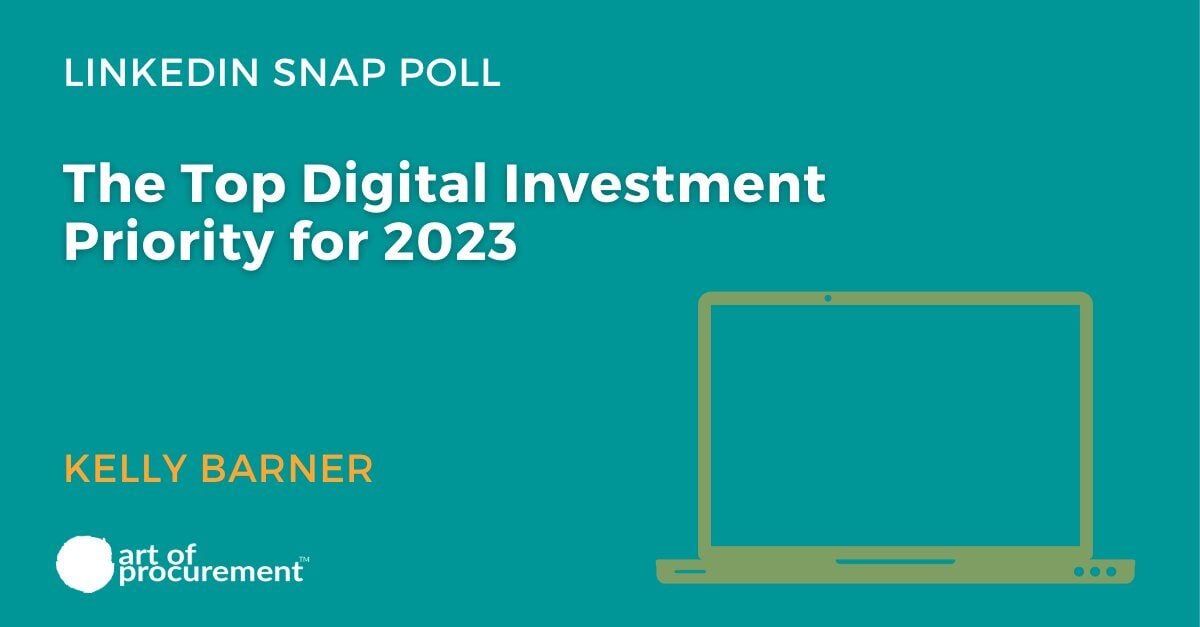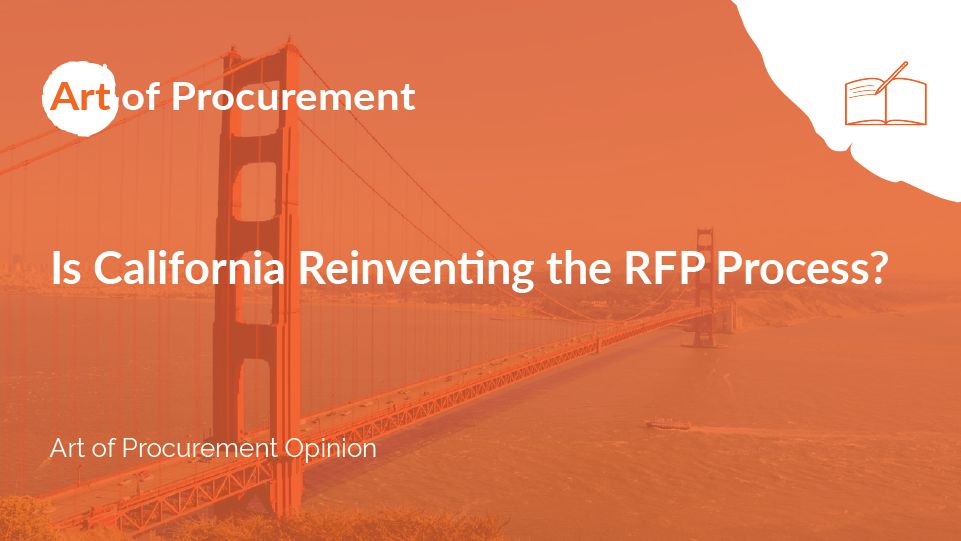
Recognizing and being able to articulate the ‘why’ behind any business decision is key to realizing the desired ROI, and investments in procurement’s tech stack are no exception. Each solution should be put in place to achieve a specific outcome – a specific digital outcome.
We recently ran a LinkedIn pulse poll to find out what priorities will drive your digital investments in 2023. Here are the results.

There will never be as much budget as procurement would like for digital investment. As a result, the solutions that are the highest priority tell us as much about procurement’s mindset as they do the types of outcomes procurement is trying to drive.
Investing in the Procurement User Experience
Digital solutions are a critical touchpoint for all of procurement’s stakeholder groups. The desired outcomes will be elusive unless the experience is frictionless.
In addition to the votes shown above, we received some interesting comments on LinkedIn. James Meads pointed out that “If you improve the user experience, then a lot of your resourcing challenges go away, and you’ll also see less attrition. It amazes me that none of the “best of” lists consider UI/UX or ease of implementation. Quite astonishing really.” In other words, the rankings that procurement so often relies upon to augment their digital decision making don’t take user experience into account.
John K. shared a saying from Harvard Marketing professor Theodore Levitt: “sell the hole, not the drill.” Not only are there more opportunities to differentiate a digital platform along user experience lines, but expectations are constantly shifting. This should continue to drive investment and innovation.
Procurement has an opportunity to invest in the overall experience created while also improving the digital user experience. They should work closely with stakeholder groups and get their input before deciding how to improve the user experience… in other words, addressing the actual user experience, not procurement’s perception of it.
Tug of War Between Internal and External Pressures
Based on the poll results, with 30 percent prioritizing procurement objectives and 24 percent prioritizing company objectives. Procurement is still internally focused despite pressure from the economy and commodity markets.
Neither challenges nor opportunities last forever, and procurement should have a plan for reviewing internal and external pressures regularly to see if a change in direction is appropriate. Input should be sought purposefully from a range of users each time.
Even when procurement prioritizes their own outcomes over company objectives, it should be possible to make direct connections between the two. This will position procurement as a well-informed and trusted advisor. Assuming the leadership team is keeping a close eye on market conditions, staying in alignment with corporate priorities should help procurement do the same.



.png)
